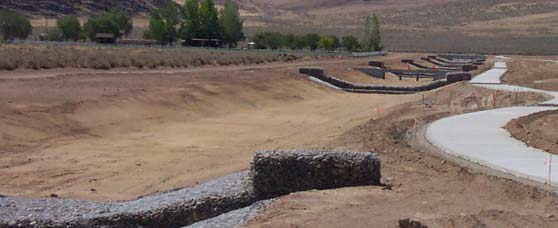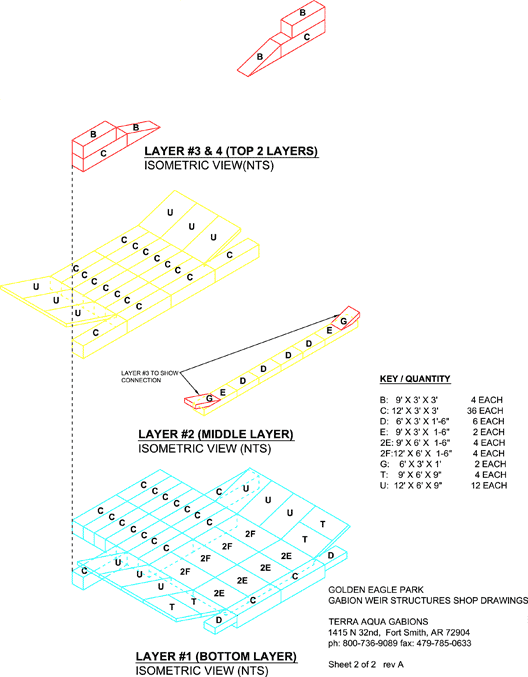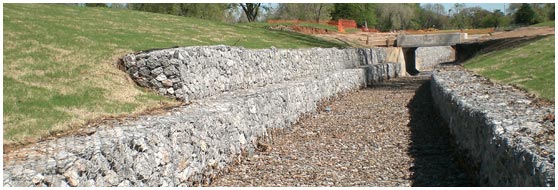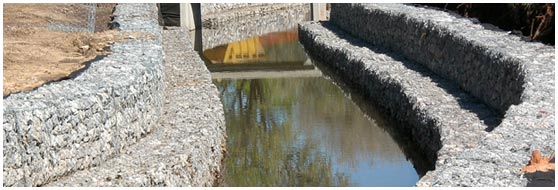Drop Structures or Weirs
Gabion weirs or drop structures are classified in three types, according to the shape of their downstream face at the center of flow.
The vertical drop structure or weir is the most basic type, and is most often used for small weirs in a channel system controlling only a reach of the stream. An essential component of the weir, is the upstream ramp, preferably formed from compacted clay, or other suitable material. The upstream ramp provides three advantages: protection of the upstream side of the gabion against damage, presentation of a smoother profile to the flow and added stability to the overall structure. In the design of vertical weirs, attention must be paid to the dissipation of kinetic energy of the cascade at the toe of the structure. In some cases, the cascade is allowed to scour the bed and forma pool where the energy is dissipated in the cushion of water and in the formation of hydraulic jump. A secondary weir is placed at the downstream end of the pool to control the formation of the jump and to restrict the extension of the pool downstream. The latter is required to ensure that the main structure is not undermined. In the case of high weirs the river bed in the stilling pool is protected by a gabion apron, and the control of the hydraulic jump is obtained by means of a broad crested counterweir: to ensure that the tail water does not affect the conditions of flow in the pool.


The stepped weir has no essential differences from the vertical type, but the water flowing over the weir dissipates a part of its energy at each step, therefore, requiring protection of the horizontal surface of each step. This structure should only be used for small weirs where the values of discharge for unit width are limited in any case it should be avoided where a heavy bed load is carried which could case damage to the mesh on the steps.
The sloped weir is used for large weirs, and when the height of the structure ranges from 25' to 50', the requirements of greater stability and improved hydraulic behavior dictate this weir type. Sloped weirs are generally found in training schemes on major rivers carrying light bed loads and in which the soils are fine granular material having a poor bearing capacity. Where a heavy bed load of shingle and boulders is carried, the crest, slope and stilling pool must be protected from abrasion by concrete cap.

It is extremely important to protect the crest of the weir against abrasion by providing protection such as a concrete cap. For stepped weirs each step shall also be protected.



DESIGNING DROP STRUCTURES OR WEIRS:
When designing a gabion drop structure or weir the following analysis must be made:
- Hydraulic calculations: the design of the crest, through which the maximum discharge is maintained in the center of the channel, the design of the stilling pool for energy dissipation and to control scour downstream of the structure.
- Structural stability calculations: checking the stability of the weir and counter weir against overturning, sliding, and bearing capacity of the structure and the foundation soil, checking the stability of the bed of the stilling pool against uplift.
All design calculations are made for a section through the center of the crest, which is the critical section.
Illustrated here are three common types of vertical weir [click to see the different types]:


